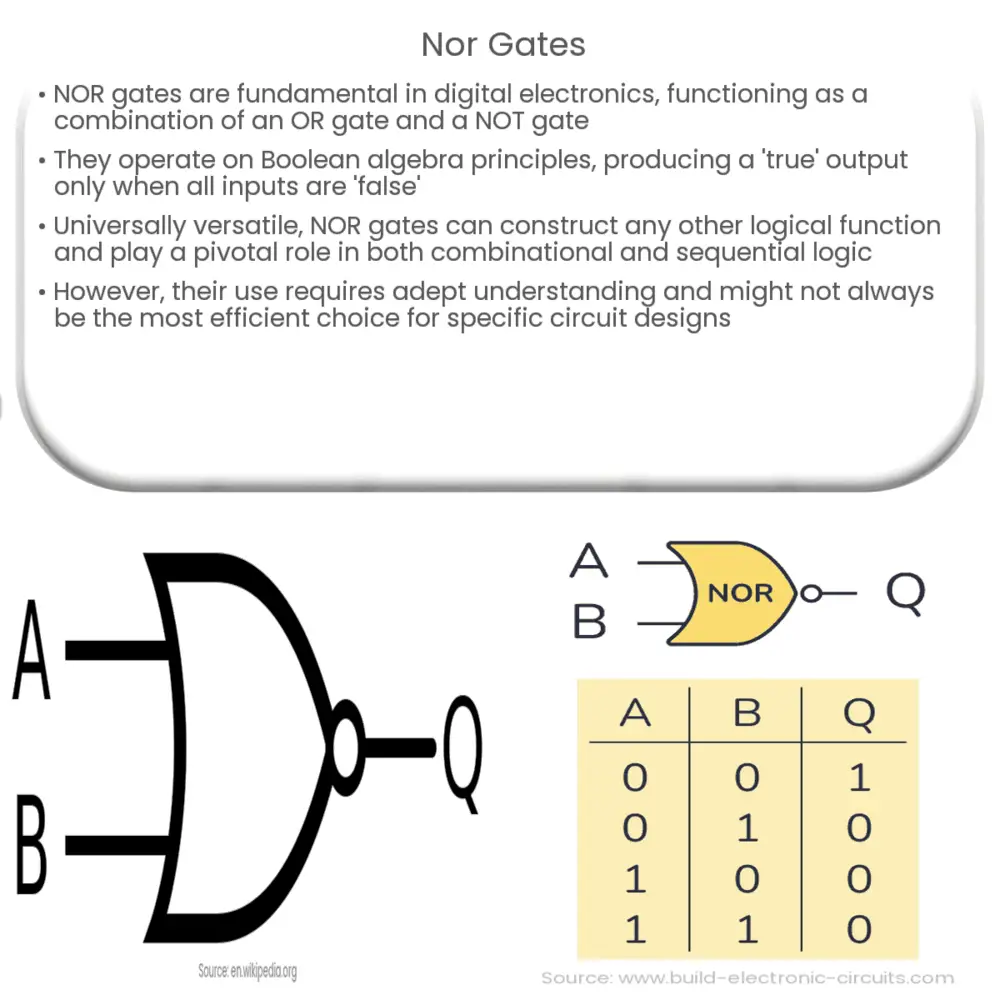Dive into the fascinating world of digital electronics with our comprehensive guide on NOR gates, their operation, applications, and significance.

Understanding NOR Gates
The world of digital electronics is fascinating, with complex computations and processes often simplified down to binary operations. Among the fundamental building blocks of these digital systems are the logic gates. A particularly significant one is the NOR gate. This article seeks to explore the intricacies of this vital digital component.
A NOR gate, which stands for NOT-OR, is a combination of an OR gate and a NOT gate. It is a universal gate, meaning that any other logical function can be constructed entirely with NOR gates.
How NOR Gates Work
The NOR gate is a digital logic gate that operates on the principles of Boolean algebra. Its output is ‘true’ or ‘1’ only when all of its inputs are ‘false’ or ‘0’. This makes it an inverted version of the OR gate. The term ‘NOR’ is derived from combining ‘NOT’ and ‘OR’, which sums up its function: it is an OR gate followed by a NOT gate.
NOR Gate Truth Table
A truth table is used to illustrate the logic of a gate. For a two-input NOR gate, the truth table is as follows:
Symbol and Structure of a NOR Gate
The symbol of a NOR gate in circuit diagrams is similar to that of an OR gate, but with a small circle on the output end. This circle represents the NOT gate that inverts the output of the OR gate. As for the internal structure, a NOR gate can be built using transistors.
Applications of NOR Gates
NOR gates have numerous applications in digital circuits. They are used in building digital systems like calculators, computers, and other digital appliances. In addition, their universal nature makes them a crucial component in programmable logic devices.
Building Other Gates with NOR Gates
Because the NOR gate is a universal gate, it’s possible to construct any other logical gate using only NOR gates. For instance, an AND gate can be created by first constructing an OR gate with NOR gates, then applying De Morgan’s Law to invert the output.
Here’s how some basic gates can be formed:
Importance in Sequential Logic
Beyond combinational logic, NOR gates also play a critical role in sequential logic, which includes elements of time or order in the logic operations. For instance, flip-flops, which are a basic type of memory element, can be constructed entirely with NOR gates. These elements form the basis of much of our digital memory technology today.
Limitations and Considerations
Despite the versatility of NOR gates, designing circuits with them can be a complex task, often requiring a good understanding of Boolean algebra and logic gate interconnections. In addition, while NOR gates can technically perform any logical operation, this does not necessarily mean they are always the most efficient choice for a given circuit design.
Conclusion
In conclusion, NOR gates, with their universal nature and critical role in digital circuitry, are integral to the realm of digital electronics. They provide the basis for both simple and complex digital systems, contributing significantly to the functionality of devices we use daily. Their functionality, combined with the potential to build other logic gates, underscores the importance of understanding and appreciating NOR gates in the field of digital electronics.

